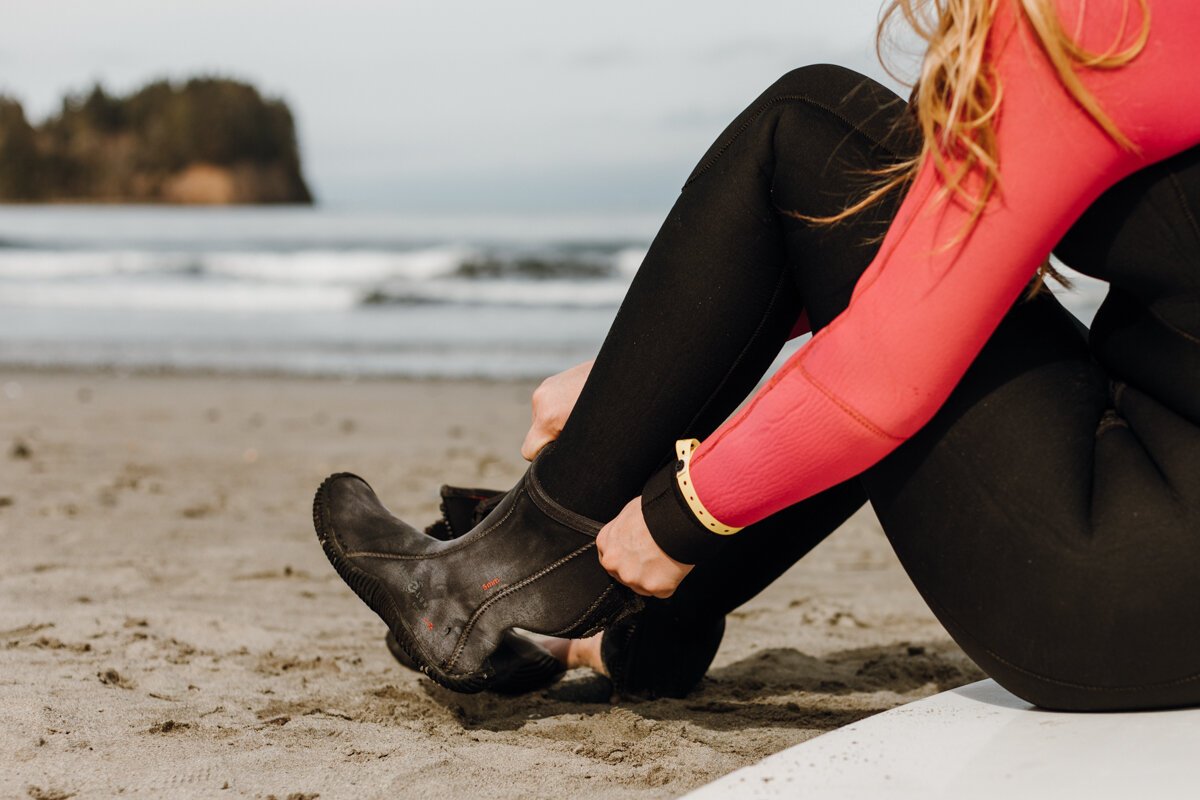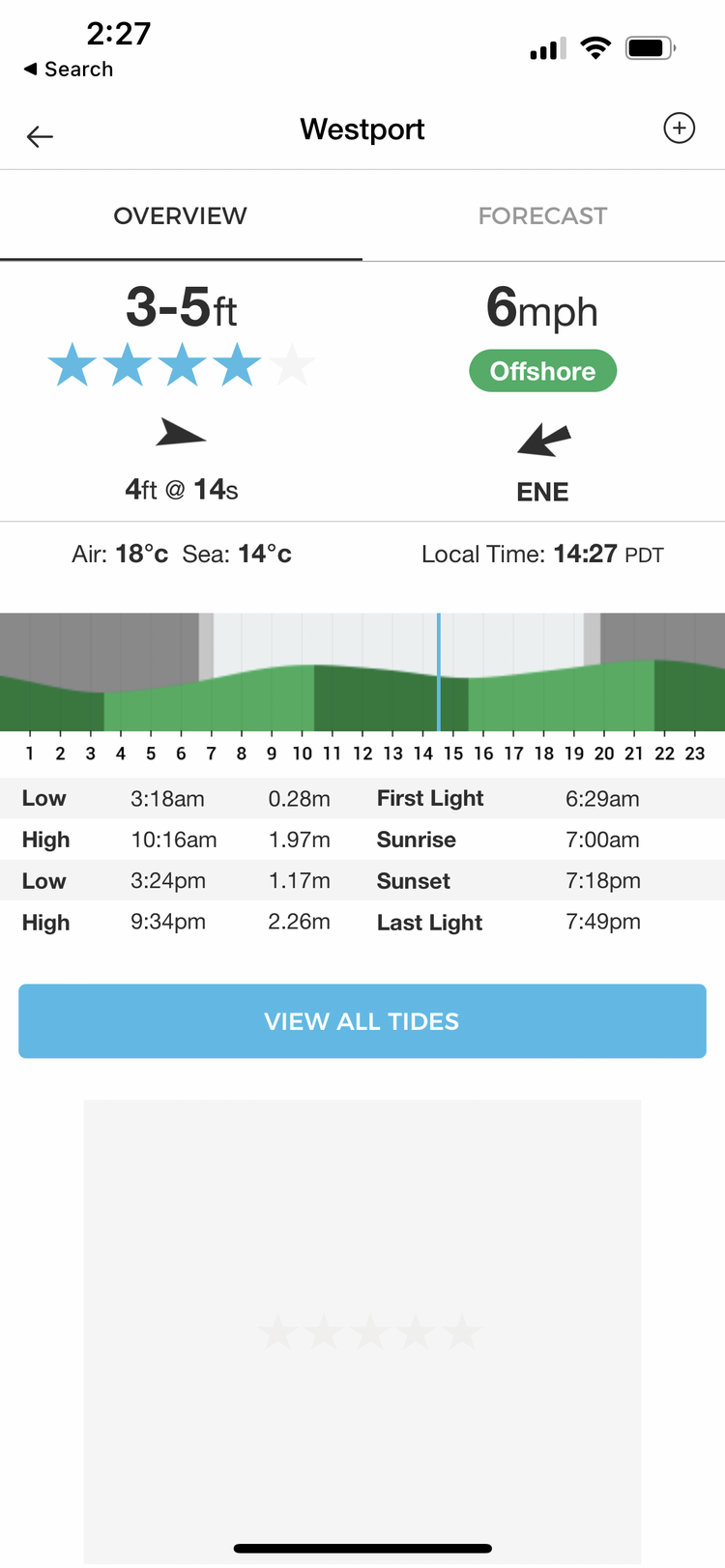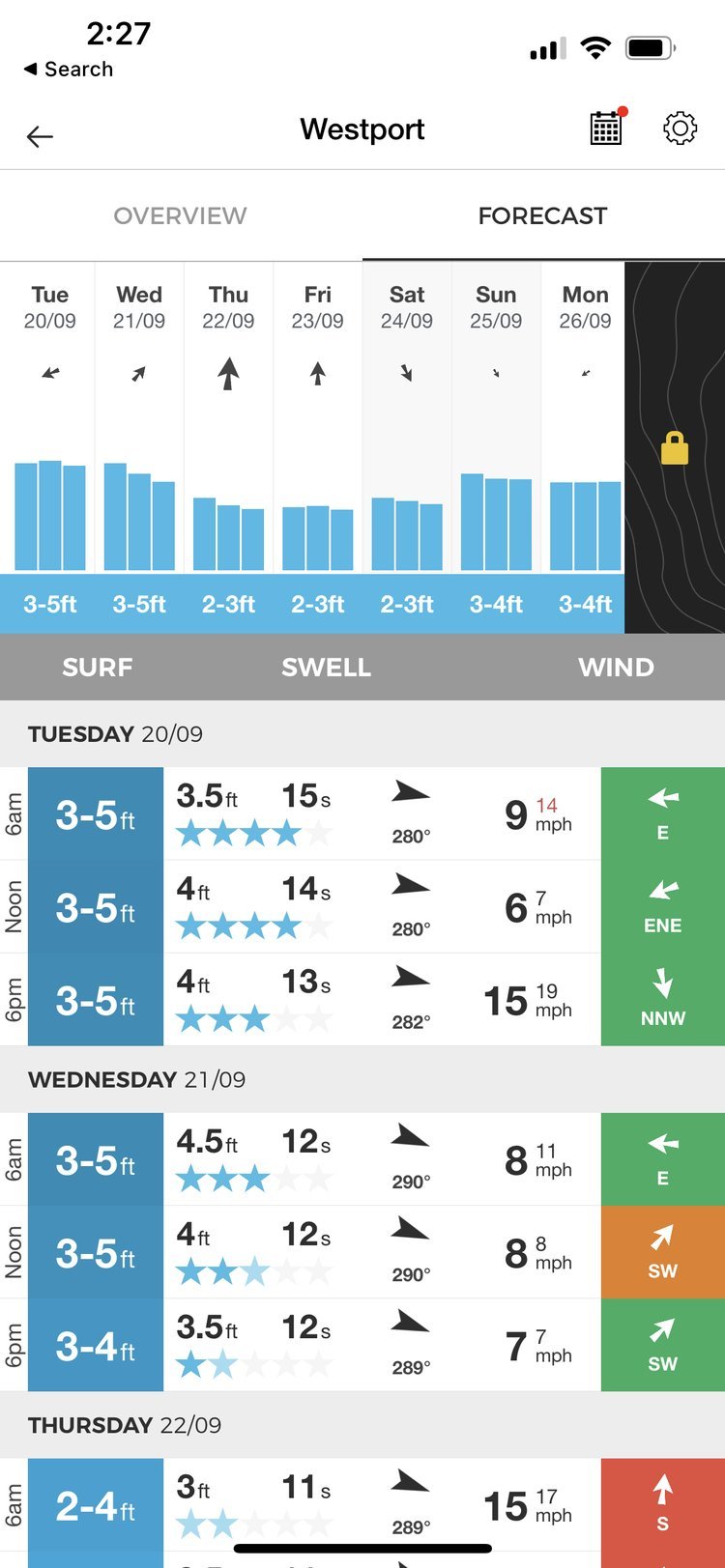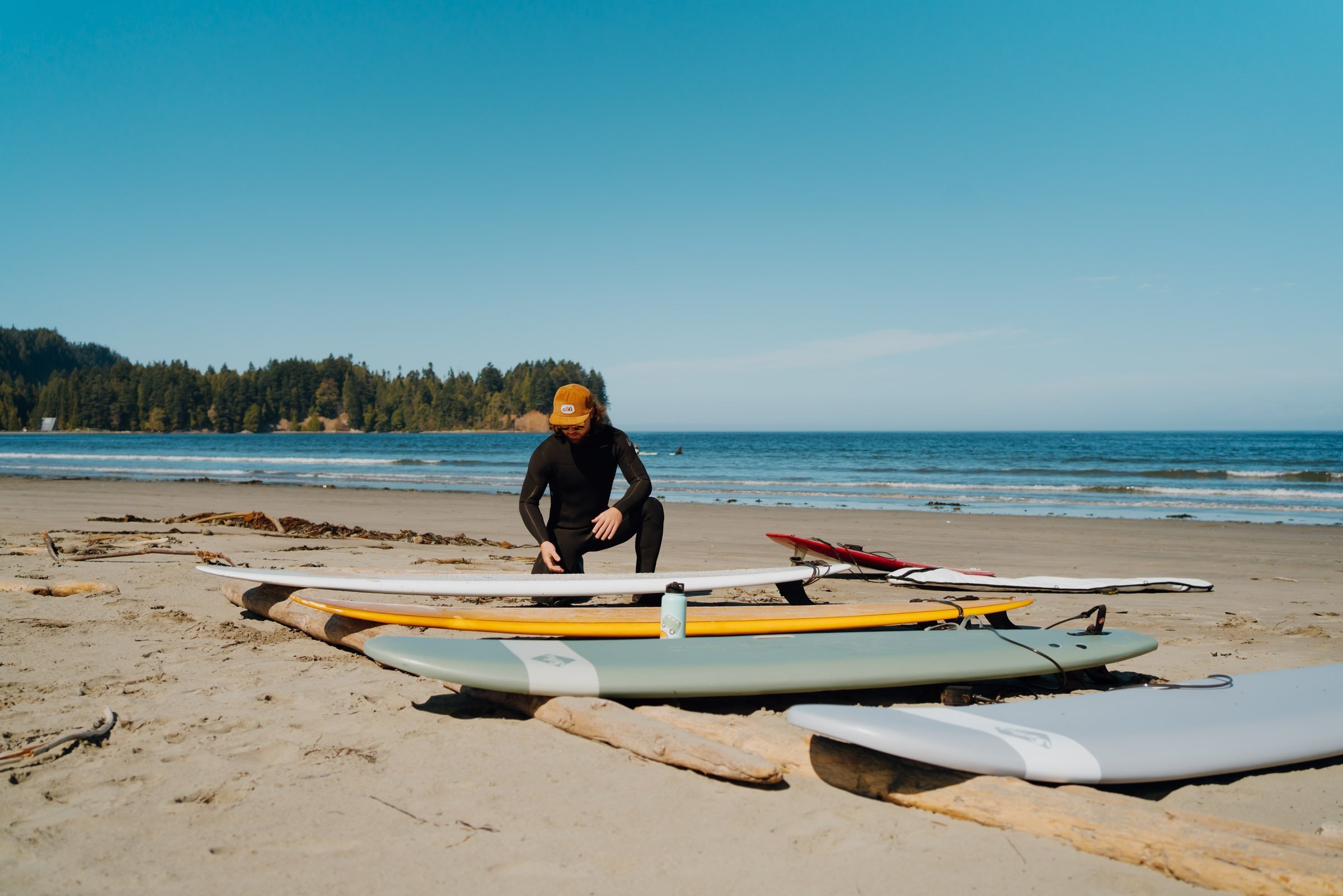Crescent Beach: The Sheltered, Sandy Bay That Offers Great Washington Surf
Surfing in Washington is a commitment, but the reward is steep if you’re willing to dip those toes in its chilly waters! There are some incredible surf breaks along our entire coast, even along the Strait of Juan de Fuca, which is where we’re heading today.
Crescent Beach, WA, shares a beautiful sandy and sheltered bay with Salt Creek Recreation Area and offers choice waves year-round. It’s the PERFECT spot for beginners who want to get wet, and you may even see a seasoned pro paddling out when the sets get bigger in the winter.
From how to get there and where to rent to pro tips for a successful day on the waves, here’s everything you need to know to surf Crescent Beach, WA.
Photo in collaboration with Juvy
This post contains affiliate links and I'll receive commission upon any purchases made through those links at no expense to you. All opinions are always my own.
Table of Contents
Crescent Beach, WA
FAQ
Where is Crescent Beach, Washington?
Crescent Beach is about a 30-minute drive Northwest of Port Angeles. Turn off Highway 101 on to Strait of Juan de Fuca Highway (WA 112 W). After about 7 miles, take another right onto Camp Hayden Rd. Continue past Salt Creek Recreation area. When you see the beach, you’ve made it!
Crescent Beach, WA
Is Crescent Beach safe?
Yes! There isn’t a lifeguard on duty (as you’ll find with most Washington beaches), but because it’s a sheltered cove, it’s one of the safer surf spots in the State.
Is Crescent Beach Water clear?
Yes! For the most part! It is saltwater, so you’ll have a little murkiness here and there, but overall, it’s typically pretty clear!
Salt Creek Recreation Area
Surf Lingo
New to the language? Here’s a quick guide to some common surf terms and what they mean!
Swell: A succession of waves that don’t crest (or break)
Sets: Ocean waves that typically come in a series of seven
Beach break: Waves that break because of a gradual sandy slope
Reef break: Waves that break over areas of reef. Because we’re in Washington, we’ll experience some rocky reef breaks
Point break: A wave that breaks off of a point, peninsula, or headland
Left-hand break (or left break): A wave that breaks to the surfer’s left
Right-hand break (or right break): A wave that breaks to the surfer’s right
Soft top or foam top: Boards that have foam on the top side, so if it hits you in the head it doesn’t hurt!
Hard top: Boards that are what you’d imagine a typical surfboard to be: usually made of wood, polyurethane, or epoxy
Outside: Refers to the waves farthest out. They’re the first catchable waves.
Inside: Refers to the white water, or the second wave breaks, closer to the beach.
Read More: The Ultimate Guide to Surfing in Washington
Crescent Beach, WA
8 Checks for Safe Surfing:
Surf Etiquette
Surf with a buddy
Going in pairs allows you to keep an eye on each other and call for the other in case of an emergency.
Tell someone you’re going surfing
Let someone know when and where you’re going out and when you expect to be back.
Check weather and tides
Before you set out, check the local forecast for wind, swell, and tide.
Know your limits
It’s easy to be caught out. Don’t challenge yourself too early and know your limits.
Be aware of rip currents
Look for areas where you think there should be waves, but there aren't. This could be a sign that it's a rip current. If caught in a rip current, don't panic! They're not going to drag you under, just take you for a little joy ride. Swim with it and slowly out to the side to conserve energy. You'll eventually escape the current and swim back to shore.
Always wear a leash
You don’t want to get separated from your board.
Wear the right wetsuit
As well as keeping you warm, wetsuits give some added protection from scrapes on rocks or impacts from other surfboards. Evo has a great guide for choosing the best wetsuit for you.
Understand surf etiquette and rights of way
Consider other surfers and water users. Running into another surfer or swimmer could result in serious injury. Make sure to give them some space.
Crescent Beach, Washington
How to Read a Surf Report
Don't forget to check the surf report before you go! Waves range from flat to 12',–beginner to expert–depending on the day and season. Don't put yourself in a sketchy situation just because you want to paddle out. Only surf what you're comfortable with.
I like to use Magicseaweed to check surf reports before I head out–I’m no expert surfer, and I’ve found that its user interface and stats are all I need to decipher if it’s going to be a decent surf day! I don’t get super technical and I’m not chasing mavericks, so knowing how big the swell is and the wind direction is enough for me.
Above are two screenshots from the Magicseaweed app. The left gives you current conditions, the tides, and sunrise and sunset times. Click on the “Forecast” tab to get the right image–this is the feature I use the most!
Each day is separated into three time slots: 6 a.m., noon, and 6 p.m. The top graph provides a wave-height visual divided into those three times, and the arrows show wave direction and intensity–the bigger the arrow, the stronger the wind.
Below, from left to right, you’ll find:
Surf height (measured trough to crest) and a star rating for the conditions that day (5 is good)
Distance between sets in seconds (the longer the distance the better, in my opinion)
Swell direction in degrees
Wind speed in miles per hour
Wind direction
Crescent Beach Campground
Okay, so what’s a good forecast? So happy you asked.
You’ll get a good feel for your ideal wave size. If you’re a beginner, I’d look for 2-3’ waves
Again, the more seconds between sets the better, in my opinion
Swell direction depends on the specific spot you’re going to. Ideally, you want a swell that comes in without any obstacles. If your surf spot faces northwest, you’ll want a swell from the northwest.
15 mph winds are strong, but not a deal breaker. You’ll start to understand how wind affects your surf the more you do it!
And lastly, green is good. If the direction is favorable to the surf spot you’re researching, the wind direction will be green. If it’s going to cause a gross, choppy, swell, it’ll be red. If that happens, go somewhere else. Trust me
Pro tip: Offshore winds are favorable, which is when the wind blows from shore out to sea rather than from sea on to shore.
Waxing surfboards at Crescent Beach
Read More: Surfing at Seabrook, WA
Where to Find Surf Rentals and Lessons
Surf Ballard
If you’re coming from Seattle, Surf Ballard will rent you a board, wetsuit, booties, and gloves for $70/day, $100 for two days, or $130 for three.
Urban Surf
Urban Surf is another great North Seattle surfboard shop, offering boards for $45/day or less depending on the type of board you’d like.
North by Northwest Surf Shop
If you’re surfing the Strait during the summer months, North by Northwest Surf Shop in Port Angeles will hook you up. Unfortunately, they’re only open May through September, so keep it in mind for your summer surfing adventures! Lessons are also available.
Northwest Board Room
Northwest Board Room just opened a Crescent Beach-front surf hut in 2022. They have wetsuits, booties, surf boards, and stand up paddleboards for rent. Hours and supply are limited, so call ahead! Lessons are also available.
Surfing Crescent Beach, WA
Crescent Beach is a privately owned and operated surf camp that shares the bay with Salt Creek Recreation Area. (Definitely check that out too if you have time!) The sheltered, sandy surf spot is PERFECT for beginners. It offers clean breaks when the swell is right, and a sandy bottom means you can save those arm muscles and walk all the way out to the break! Ideal.
For $8 a day, surfers get beach access, parking, complimentary wifi, and access to a gear rinse station, bathrooms, and hot quarter-operated showers. Basically everything you need for a comfortable surf sesh.
If you need to rent, Northwest Board Room will hook you up! They have a small selection of boards, suits, and booties to get you out in the water. Find it on the west side of camp.
Bonfires at Crescent Beach Campground
WHERE TO STAY IN CRESCENT BEACH
Camping at Salt Creek Recreation Area
Crescent Beach RV, sites, tent camping, and two cabins are available for an overnight fee. Check rates and availability here.
Salt Creek Recreation Area is right next door and offers beautiful camping options for those who plan in advance! Reservations are available February through October and book up fast. Reserve here ($10 reservation fee). All other months are first come first serve!
Whiskey Creek Cabins: 20 oceanfront cabins and a-frames–some almost resembling treehouses–sit at the ocean’s edge just a 17-minute drive from Twin Beach and a 15-minute drive from Crescent Beach.
Read More: Why Salt Creek Recreation Area Should be on Your Must List!
Love a cool place to stay? Check out some of my all-time favorite rentals here!
Nothing like a post surf sesh brew!
Leave No Trace
Always remember to leave no trace–pack out what you pack in, leave what you find, prepare for every adventure, and respect the outdoors and each other every step of the way. Learn more about how to leave no trace here.
And if you do decide to venture out on any of these adventures, drop a comment below or shoot me an email to tell me how it went!
So, what are you waiting for? The water’s fine!
Crescent Beach at sunset.



















